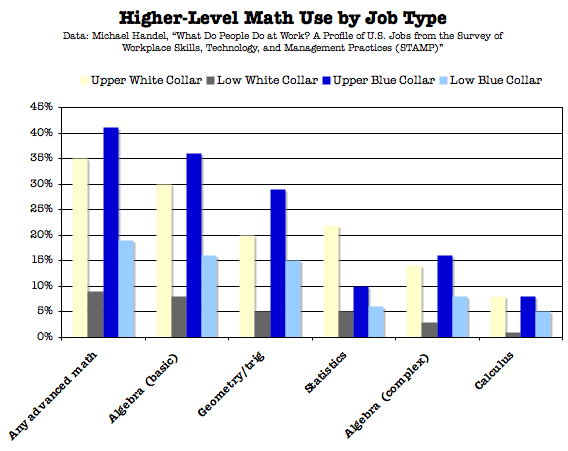Hi Top Ten Reasons That Building HVAC Systems Do Not Perform as Intended!.
The Heating, Ventilating and Air Conditioning
Contractor (HVAC) and the Sheet Metal Journeyman’s
roles in the construction of new and existing building
projects can play a major part in the final comfort
and energy efficiency of a building. There appear to
be many issues prevalent in the HVAC industry that
directly affect energy usage, sound and comfort levels
in buildings.
.jpg) |
| Visit Web Site to Download Standards |
This article will show several problem areas common to and recurring on projects. It is always easier to correct
problems before the problems are built into the system.
The knowledgeable contractor who understands the
applicable standards will install these items per the
proper standards or notify the engineer before performing
work that could create a potential problem. This will
reduce problems and reduce chances for an adversarial
relationship to develop between the design engineer and
the contractor once the project is completed.
.jpg)
Issue # 1
Duct-work is not reinforced for the proper pressure classifications.
The Sheet Metal and Air Conditioning Contractors
National Association (SMACNA) is an example of the association
that has published duct construction standards
that designate the proper way to fabricate and
install duct-work, duct accessories and air handling
equipment. These standards are so prevalent that most
construction documents and specification say to the
effect “Install duct-work to SMACNA standards”.
However, it is the very familiarity with the term SMACNA
standards that has led engineers, contractors and sheet
metal journeymen to forget to examine current SMACNA
documents. These standards have been continually
upgraded and improved over the years. The current
SMACNA standard is the 3rd edition dated 2005. We still
find many engineers and contractors specifying and
installing duct-work exactly like they did 25 years ago
SMACNA pressure classifications now specify
duct-work reinforcing for specific duct pressures from
½ inch to 10 inches of static pressure. It is the design
engineer’s responsibility to specify the systems
design static pressure. If the design engineer does not
specify an exact static pressure, but instead states
“Install duct-work to SMACNA standards”, SMACNA
standards compliance will have duct-work built to a
1 inch pressure class, with the exception of duct-work
upstream of a VAV box which should be constructed
to 2 inch pressure.
This lack of clarification by the design professional
or failure of the installing contractor to follow the
required pressure classifications shown in the
specifications is the main reason duct-work collapses
or blows apart. The duct failure is invariably due to the
fact that the proper pressure class was not specified
or the duct-work was not constructed to the proper
pressure classification. It is relatively inexpensive
insurance for the installing contractor to check the
pressure classification to verify that a reasonable
pressure has been specified for the duct-work and that
the actual current SMACNA pressure classifications
are being followed in the field.

Issue # 2
Failure to adequately seal ducts.
Duct leakage refers to the fact that air inside a supply
duct under positive pressure will leak out of the
Pitts-burg or Snap lock seams, from the slip, drive or
TDC connector joints or out of wall penetrations from
damper rods, screws used in hanging ducts or any
other wall penetrations.
This leakage causes two problems. When air leaks out
of a duct system, some areas at the end of the run
may be short of airflow because the air has leaked from
the system before it reaches its intended location. This
lack of air can cause over heating in the summer or the
inability to heat in the winter.
In some cases the fan has the ability to supply enough
air to overcome the leakage rate and still meet the
room requirements. Excessive fan energy is used to
provide the required flow to spaces. The fan energy
increases as the cube of the air leakage. For example
if a system has 10% leakage and the fan design was
originally 20 Horsepower (HP), the new motor required
to overcome the 10% loss will be 20 HP x (1.1)3
= 26.6
HP. In this case, the owner pays for an additional 6.6 HP
fan operation for the life of the building.
SMACNA has specified the duct sealing requirements
for duct systems. If duct-work is not sealed, leakage
rates of 25% on 2 inch plus duct-work can be expected.
SMACNA seal classes of Seal Class A, B and C define the
degree of sealing required to be completed. Seal Class
C means that all Transverse joints (Slip, Drive, and TDC)
connections need to be sealed. Seal Class B means that
all longitudinal seams (Pitts-burg and Snap lock) and
all joints as above need to be sealed. Seal Class A is
the most stringent and means that all wall penetration
(damper rods, screws and duct accessories) must be
sealed in addition to all seams and joints as defined
above.
Failure to properly specify sealing or to actually seal
ducts in the field are the primary reasons duct-work
systems leak.
.jpg)
Issue # 3
Failure to understand the need to seal return and
exhaust ducts.
Air will leak into the duct-work through the same
openings described above. When excessive leakage
occurs in exhaust ducts, it is sometimes impossible to
obtain the required exhaust air at the needed location.
We encounter many cases where the exhaust air flow
at the fan is 15% over design and the exhaust flow at
the register or hood location is 20% under design. This
discrepancy is due to the fact that air is leaking into
the duct systems along the duct route and not at the
specified exhaust point. This can lead to stuffy, stagnant
rooms or laboratory exhaust systems not performing as
required. System operating costs are also increased by
the amount as calculated in Item 2 above.
.jpg)
Issue # 4
Failure to adequately pressure test duct-work to
prove that duct sealing is effective.
Duct-work pressure testing is a method to determine
how well ducts are constructed to prevent air leakage.
Duct leakage testing pressurizes a closed section of
duct-work to a known pressure. The amount of leakage
at a specific pressure is calculated by measuring the
amount of air that is measured as it is blown into the
closed duct system.
SMACNA has defined duct leakage rates as Leakage
Class 24, 12 or 6. These numbers simply mean that at 1
inch of test pressure ducts can be expected to leak 24,
12 or 6 CFM per square foot of duct surface. The mere
presence of duct sealing material on a joint or seam is
no guarantee that proper sealing has been achieved.
Once the installing contractor has leak tested several
sections of duct-work and has adequate documentation
that the duct sealing procedures being used actually
keep leakage within the specified ranges, the frequency
of sealing can be reduced.
.jpg)
Issue # 5
Failure to understand SMACNA Duct Construction
Standards in the fabrication and installation
process.
While SMACNA standards are almost always used as a
project reference, experience has shown that proper
techniques are not understood by both the engineers
and contractors. Design engineers often do not allow
sufficient room to install proper sized transitions or
offsets. In many cases when there is insufficient room,
journeymen overlook the applicable standard and
install transitions or offsets that are chocked or do not
have proper slope.
When SMACNA standards on fittings are not followed,
the entire system has imposed restrictions that the fan
must overcome. This extra fan energy is an operating
cost the owner bears for the lifetime of the project. In
some cases, the addition of several improper fittings
can cause air flow noise and lack of adequate air flow
to occupied spaces.

Issue # 6
Failure to properly install turning vanes.
Air flowing in ducts has the same restriction whether
it is flowing away from the fan or flowing to the fan.
Vanes are required in all ducts where the air velocity
is greater than 1000 feet per minute (fpm). While most
contractors understand the importance of installing
vanes in supply duct, a misconception seems to exist
in the industry that implies return ducts and exhaust
ducts do not require turning vanes.
The previous six issues involved contractor related
concerns in duct installation and fabrication. Many
design engineers continue to unknowingly make
similar missteps in preparing design documents and
specifications.
The HVAC contractor that understands the problems
these issues create can stop potential problems that will
show up during start up by informing the design engineer
of the concerns before ducts and systems are installed.
.jpg)
Issue # 7
Duct velocities approaching 2500 fpm may create
noise and will cause increased pressure drops in
fittings and duct-work.
Duct velocity can be calculated by dividing the design
air flow in a duct at any location by the area of the duct
in that location. For example, if a fan is rated at 6000
Cubic Feet per Minute (CFM) and the duct size at the
fan discharge is 24 x 12, the velocity is 6000 CFM /
(24” x 12”) /144 sq inches per sq ft = 3000 fpm.
When velocities are over 2500 fpm, it is good practice to
notify the engineer and voice your concerns. It is much
easier to solve a potential problem by increasing duct
size before the duct is installed. Whenever potential
problems can be addressed and corrected before they
are found during the Test and Balance phase of the
project, the design engineer and installing contractor
remove a potential issue that has the chance to become
adversarial.
.jpg)
Issue # 8
The detrimental impact on fan capacity caused by
fan system effect is a problem not fully understood
by the design industry.
System effect is the fact that fans are tested with a
specific amount of straight duct connected to the inlet
or discharge. Whenever installation conditions differ
from the test installation, the fan will suffer reduction
in capacity. In a scenario as such that the airflow leaving a
fan does not reach a uniform flow profile for several
duct diameters from the fan discharge. The distance
required to reach uniform flow is dependent of the
velocity of the air. The higher the duct velocity, the
greater the distance required before this uniform flow
is attained.
All duct accessories (fire dampers, control dampers,
sound attenuators, etc) are all tested with uniform flow
conditions when their design pressure drop is determined.
Whenever any one of these components is installed in a
portion of duct-work where the flow is not uniform, the actual pressure drop will always
be greater than the design pressure drop.
When system effect imposed pressure drops are not
counted in design calculations, fans have greater static
pressure than calculated and the fans do not generate
the required air flow.
Elbows installed in the zone of non-uniform air flow
also create a system imposed pressure drop.
The American Movement and Control Association
(AMCA) has documented the various additional
pressure drops that should be added to the calculated
pressure drops.
System effect is a phenomenon that cannot be measured,
but it is real and is one of the reasons many fans cannot
develop the required capacity shown in manufactures
catalog data. The owner and design engineer will all
benefit if the contractor or journeyman will take a close
look at fan inlets and discharges during shop drawing
approval or the field measuring phase of the project.
During this time it is advisable to determine if any duct
accessory or elbow has been installed within the first
4-6 duct diameters from the fan inlet or discharge. If this
situation exists, the design engineer should be notified
and informed of the potential problem.
 |
| Visit Website for Documented Calculations |
Issue # 9
Drawings with missing dimensional sizes are
usually interpreted improperly. Undersized
duct-work is usually installed.
The problem is usually seen on VAV box inlets where
duct sizes are omitted from the drawings.
It has been known through experience that when inlet sizes are
not shown on the drawings, the installing contractor
invariably installs duct-work that is sized for the inlet
size of the VAV box.
In many instances the VAV inlet is sized for velocities
that exceed 2500 fpm. While this velocity may be
satisfactory for the 6 inch inlet length of a VAV box,
the same problems shown in Item 7 will again surface
on the ducts leading to the VAV box. The problems are
compounded when extended lengths of inlet duct and
numerous elbows are installed. Inlet static pressure
to the VAV box can be reduced to the point that the
box will be starved for air. To compensate for this, the
fan speed is increased and the owner pays excessive
energy over the life of the project just because one or
two VAV inlets are undersized.
.jpg)
Issue # 10
Most specifications and details call for four duct
diameters of straight duct before the inlet to a
VAV box, but the actual duct drawings do not have
sufficient room to allow for this installation.
When sufficient lengths of straight ducts are not
installed, the air flow sensors on a VAV box do not read
properly. This causes the VAV box to hunt and cause the
VAV controller to be hard to control. Unstable control
can cause noise and cause the fan to operate at higher
static pressures than necessary.
The following example shows the cost to operate
two systems for the same sized building. While each
building is the same size and has the same heating and
cooling capacity, Building II will show the increase in
energy costs because various items in the article listed
above list exceeded those in Building I.
.jpg)
Cost example:
Assume a system with the following components:
• 100,000 sq ft, 5 Story Office Building
• Occupied 16 hours per day 6 days per week
• $ .10 KW –hr
• $12.00 KW demand
Example 1 Example 2
Air Flow (Duct Leakage) 105,000 CFM 115,000 CFM
System Effect Fan Discharge
Elbow Placement .5 in 1.5 in
Sound Attenuation Placement .25 in .75 in
Duct-work Restrictions 2.5 in 3.5 in
Missing Turning Vanes 1.0 in 1.75 in
Total System Pressure 4.25 in 7.50 in
HP = CFM x SP / (6356 x Fan Eff)
Horsepower System I 105,000 x 4.25 / 6356 x .65 = 108 HP
Horsepower System II 110,000 x 7.50 / 6356 x .65 = 200 HP
Fan Operation 16 hours per day 6 days per week
Electrical Cost $ .10 KW –hr
200 HP – 108 HP = 92 HP
92 HP x .746 KW Hr / HP = 68.6 KW-hrs
68.6 KW –hrs x 16 hours / day x 6 days / week x 52 wks per
year = 342,500 KW –hrs / year
342,500 KW –hrs / year x $ .10 / KW –hr = $ 34,250 per year
of extra electrical KW usage
Increase in demand Charge
200 HP – 108 HP = 92 HP
92 HP x .746 KW Hr / HP = 68.6 KW –hrs x 1 hour = 68.6
KW demand
68.6 KW demand x $12.00 x 12 months = $ 9,878 per year
Total cost per year = $ 34,250 + $ 9,878 = $ 41,000
The potential savings to eliminate restrictions and reduce
static pressure over the 25 year life of the project is over
$1,000,000.

.jpg)
.jpg)
.jpg)


.jpg)
.jpg)

.jpg)
.jpg)
.jpg)

.jpg)
.jpg)

.jpg)
.jpg)








